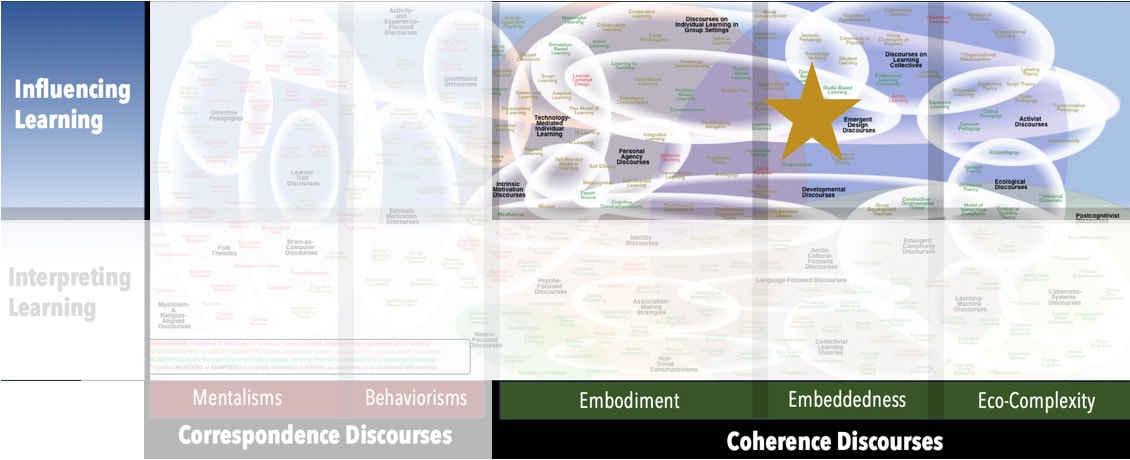Focus
Iterations of creating, assessing, and redesigning to support learningPrincipal Metaphors
- Knowledge is … ever-expanding repertoire of human possibility
- Knowing is … established competencies (to design and make)
- Learner is … a designer (individual)
- Learning is … making meaning (through designing artefacts collaboratively)
- Teaching is … designing (iterative “making” tasks)
Originated
2000sSynopsis
Design-Based Learning is structured around the making of artefacts through iterative (cyclical, improvement-oriented) processes of design, build, test, and revise. Design-Based Learning incorporates support for the learning of softs skills. It is seen to engage deeper learning as learners develop, synthesize, and apply their knowledge to create artefacts through body-active problems solving, challenges, and other inquiries – such as those encountered in robotics competitions. Associated discourses include:- Interest-Driven Creator Theory (Wenli Chen, 2020s) – a Design-Based Learning theory that, as the name suggests, is aimed at promoting a lifelong mindset of engaging in knowledge creation. The model focuses on and provides advice on the development of three “anchored concepts”: Interest, Creation, and Habit.
Commentary
Design-Based Learning is a relatively new and, hence, so is the research for assessing its effectiveness. Proponents of Design-Based Learning claim that a body of evidence has been amassed to show more profound learning (see Deep vs. Surface Learning) and the development of good analytic knowledge of systems. A common concern among educators is that significant expertise is required to design learning tasks.Authors and/or Prominent Influences
Doreen NelsonStatus as a Theory of Learning
Design-Based Learning is not a theory of learning because it is more concerned with influencing learning than offering new insight into the complex dynamics of learning.Status as a Theory of Teaching
Design-Based Learning is theory of teaching, offering prescriptions on incorporating soft skills and iterative design to make artefacts in collaborative settings. There is also a strong emphasis on teacher collaboration.Status as a Scientific Theory
Design-Based Learning draws on Embodiment Discourses, Embeddedness Discourses, and Eco-Complexity Discourses, and it is supported by some empirical evidence.Subdiscourses:
- Interest-Driven Creator Theory
Map Location

Please cite this article as:
Davis, B., & Francis, K. (2022). “Design-Based Learning” in Discourses on Learning in Education. https://learningdiscourses.com.
⇦ Back to Map
⇦ Back to List
